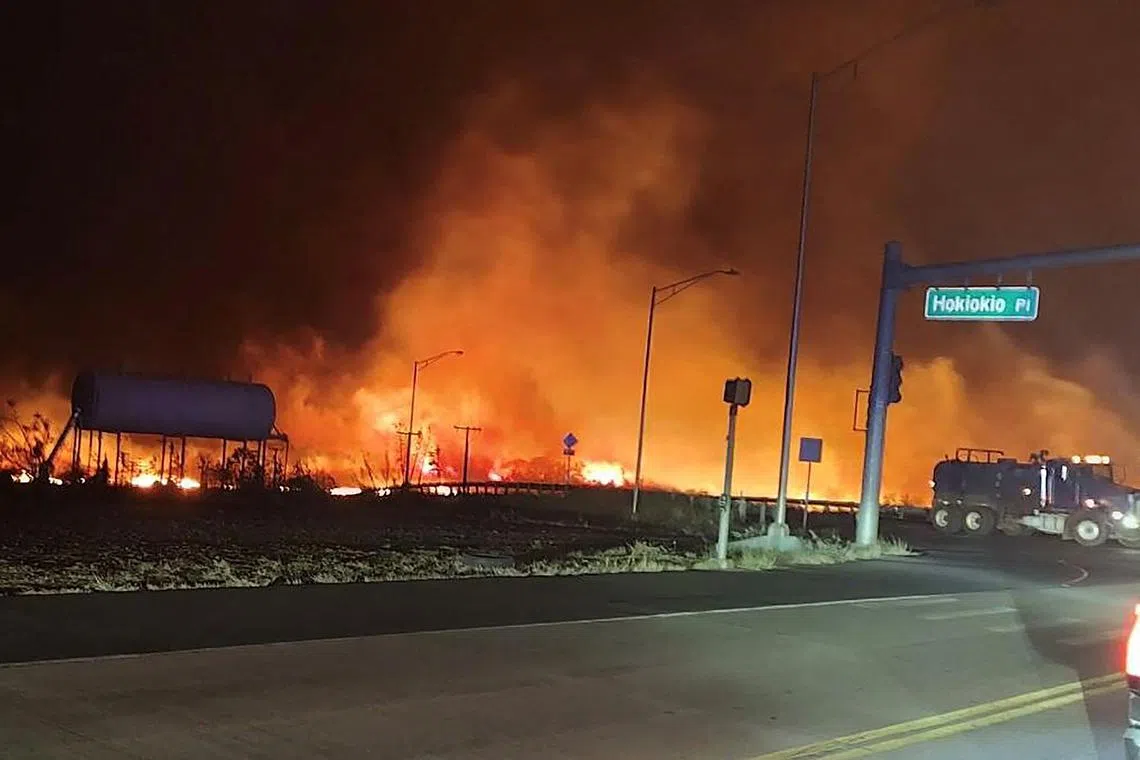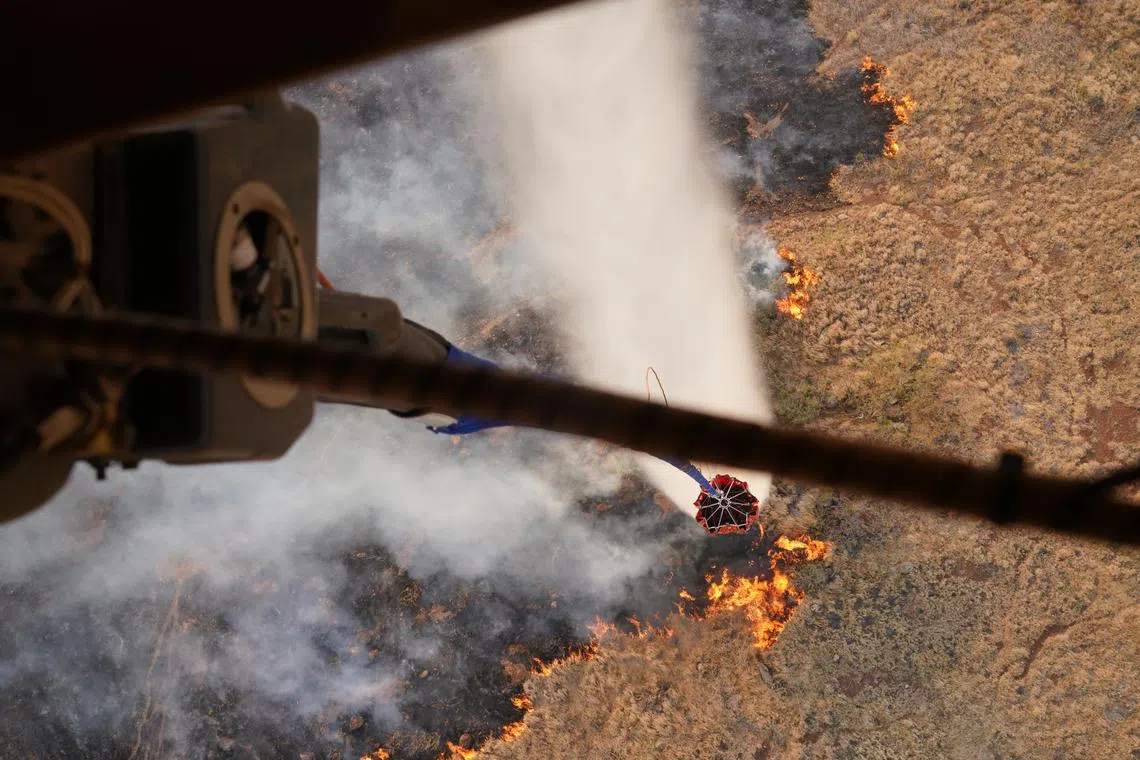Maui wildfires kill 55 as Hawaii foresees years-long recovery
Sign up now: Get ST's newsletters delivered to your inbox

The Lahaina fire reduced entire neighbourhoods to ashes on the western side of the island.
PHOTO: AFP
Follow topic:
Hawaii - Maui’s wildfires have killed at least 55 people and turned the resort town of Lahaina into smouldering ruins that will take many years and billions of dollars to rebuild, Hawaiian officials said on Thursday.
Thousands of people will need immediate housing, Hawaii Governor Josh Green told a news conference, and he estimated as many as 1,000 buildings were damaged or destroyed.
“It is going to take many years to rebuild Lahaina,” he said, as the officials began to map out a plan to shelter the newly homeless in hotels and tourist rental properties.
“We’re going to need to house thousands of people,” he added.
The fast-moving inferno caught the island of Maui off guard
Thousands of tourists were trying to leave Maui,
Many more people suffered burns, smoke inhalation and other injuries. Search and rescue efforts continue and thousands of people have fled into emergency shelters or left the island.
Mr Vixay Phonxaylinkham, a tourist from Fresno, California, said he was trapped on Lahaina’s Front Street in a rental car with his wife and children as the fires approached, forcing them to abandon the car and jump into the Pacific Ocean.
“We floated around for four hours,” he said from the airport while awaiting a flight off the island, describing how they held on to pieces of wood for flotation.
“It was a vacation that turned into a nightmare. I heard explosions everywhere, I heard screaming and some people didn’t make it. I feel so sad,” he said.

Hawaii wildfires fanned by winds from Hurricane Dora forced evacuation late on Aug 8, 2023.
PHOTO: AFP
The death toll rose on Thursday to reach 55, the Maui County said in a statement, which also reported that the Lahaina fire was 80 per cent contained, as firefighters secured the perimeter of the wildland areas that burned.
The Pulehu fire, about 30km east of Lahaina, was 70 per cent contained. There was no estimate for the Upcountry fire in the centre of the eastern mass of the island, the Maui County said.
The Lahaina fire reduced entire neighbourhoods to ashes on the western side of the island. Lahaina is one of Maui’s prime attractions, drawing two million tourists each year, or about 80 per cent of the island’s visitors.
Tourists and locals alike fled with few or none of their belongings as the fire spread rapidly due to dry conditions, a build-up of fuels and strong winds.
The fires are the worst disaster to befall Hawaii since 1960, one year after it became a US state, when a tsunami killed 61 people.
The fate of some of Lahaina’s cultural treasures remains unclear. The historic 18m-tall banyan tree marking the spot where Hawaiian King Kamehameha III’s 19th-century palace stood was still standing, though some of its boughs appeared charred, according to a Reuters witness.

About 11,000 homes and businesses were without power on Maui.
PHOTO: REUTERS
US President Joe Biden approved a disaster declaration for Hawaii,
The cause of the Maui wildfires is yet to be determined, the officials said, but the US National Weather Service said dry vegetation, strong winds and low humidity fuelled them.
Wildfires occur every year in Hawaii, according to Dr Thomas Smith, an environmental geography professor at the London School of Economics and Political Science, but this year’s fires are burning faster and bigger than usual.

A Hawaii Army National Guard CH47 Chinook dropping water on a burning wildfire on the Island of Maui on Aug 9, 2023.
PHOTO: EPA-EFE
The Big Island of Hawaii also experienced at least two major brush fires.
Scenes of fiery devastation have become all too familiar elsewhere in the world this summer. Wildfires, often caused by record-setting heat, forced the evacuation of tens of thousands of people in Greece, Spain, Portugal and other parts of Europe. In western Canada, a series of unusually severe fires sent clouds of smoke over vast swathes of the United States, polluting the air.
Human-caused climate change, driven by fossil fuel use, is increasing the frequency and intensity of such extreme weather events, scientists say, having long warned that countries must slash emissions to prevent climate catastrophe. REUTERS

